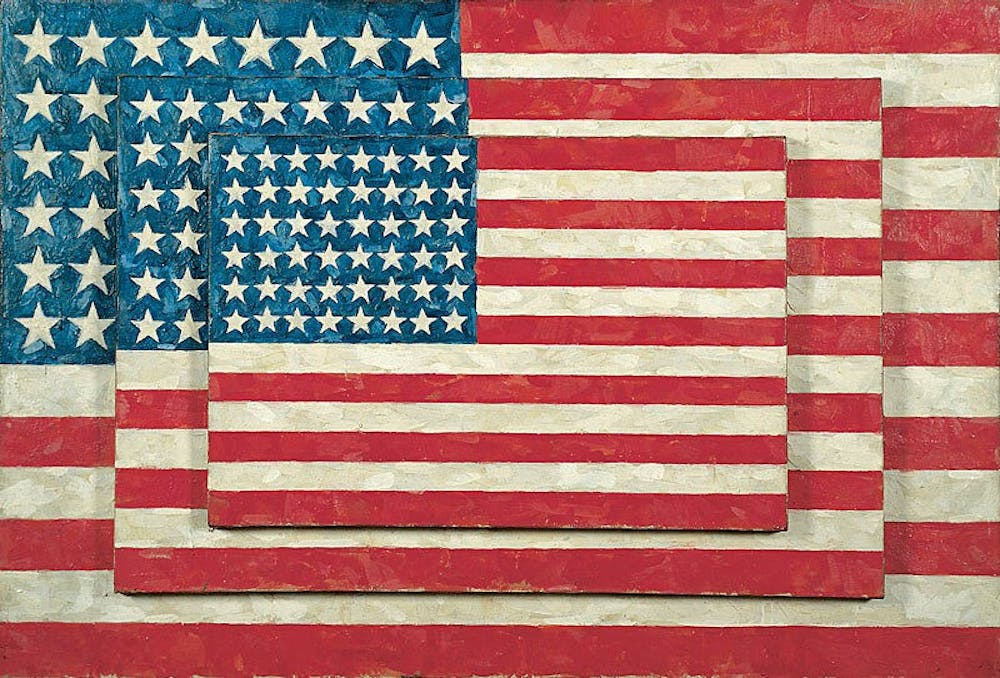Upon entering the Jasper Johns retrospective Mind/Mirror, viewers will come face to face with an American flag. This is a timely choice; a recent New York Times Op–Ed challenged six artists to offer their own alternatives or reinterpretations of the flag. Some of their redesigns were idealistic and others disenchanted. American flags also show up repeatedly throughout Mind/Mirror. While they're sometimes doubled or inverted, they are always identifiable. That said, visitors won’t find any easy answers about “what it all means.” The closest thing to a concrete takeaway that this retrospective has to offer is this: Jasper Johns has never viewed any symbol as sacrosanct.
Mind/Mirror is a unique undertaking in the world of fine art because, if you were to attend the exhibition in Philadelphia, you would only be getting half the story. That’s because this retrospective was a joint venture between the Philadelphia Museum of Art and the Whitney Museum of American Art, occupying gallery space at both venues. In his opening remarks at the press preview, director Timothy Rub noted how these two discrete parts “do not only mirror but also double each other” to offer “a remarkably broad and integrated picture of Johns’ work and how it has developed over time.”
A penchant for mirroring, symmetry, reversals, and doubles is also clearly evident across the catalog of Johns’ work. The exhibition’s ten rooms, or “themes,” bring together pieces that share, according to curator Carlos Basualdo, “a lens, a turn of mind, if you will.” For example, the Trial and Working Proofs room contains multiple trial proofs of Untitled, 2014. The artwork is a fabulous late–career etching, playful in color and form, and Johns’ curiosity carries through between the different iterations. To understand how he subverts the print as a means of recreation, just look at these two versions side–by–side:
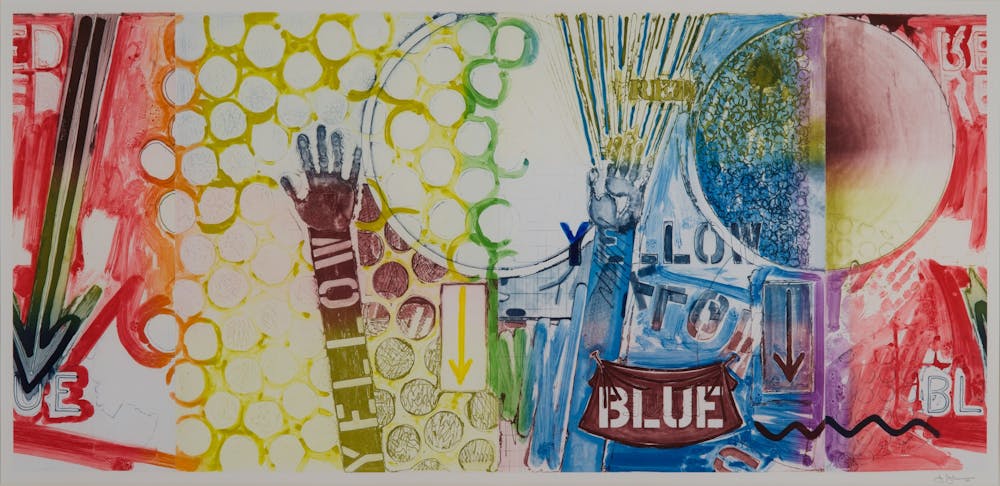
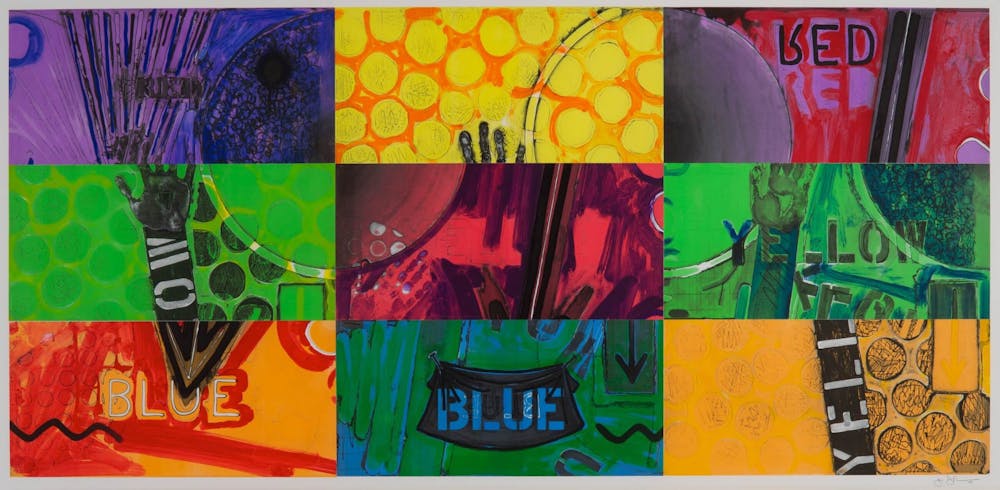
"Untitled (2014)" Trial and Working Proofs, Jasper Johns "Mind/Mirror" Exibition / Photos courtesy of the Philadelphia Museum of Art
Fortunately, visitors who aren’t able to attend the Whitney’s corresponding exhibition will still have plenty of food for thought thanks to the vast collection here in Philadelphia. In particular, the Numbers gallery showcases both the sheer quantity of works and variety of mediums on display. The walls of the room are crowded with digits, arranged in spiraling configurations that communicate a sort of "endless counting,” as per Basualdo.
The centerpieces of Numbers are two large–scale works, both entitled 0 through 9, one an oil painting and the other a charcoal sketch. Both versions are composed around the same pattern: an overlay of digits on top of each other. This has the effect of transforming these symbols with agreed–upon meanings into abstract signs. This capability of Johns is emphasized by the retrospective time and time again. But Jasper Johns is by no means a purely cerebral or theoretical artist; the oil paint interpretation of 0 through 9 is physical and visceral, particularly when viewed from afar as the individual numbers blend into one another. And when observed up close, the exuberant splotches of paint are so unadulterated that they appear to have been used directly from the tube.
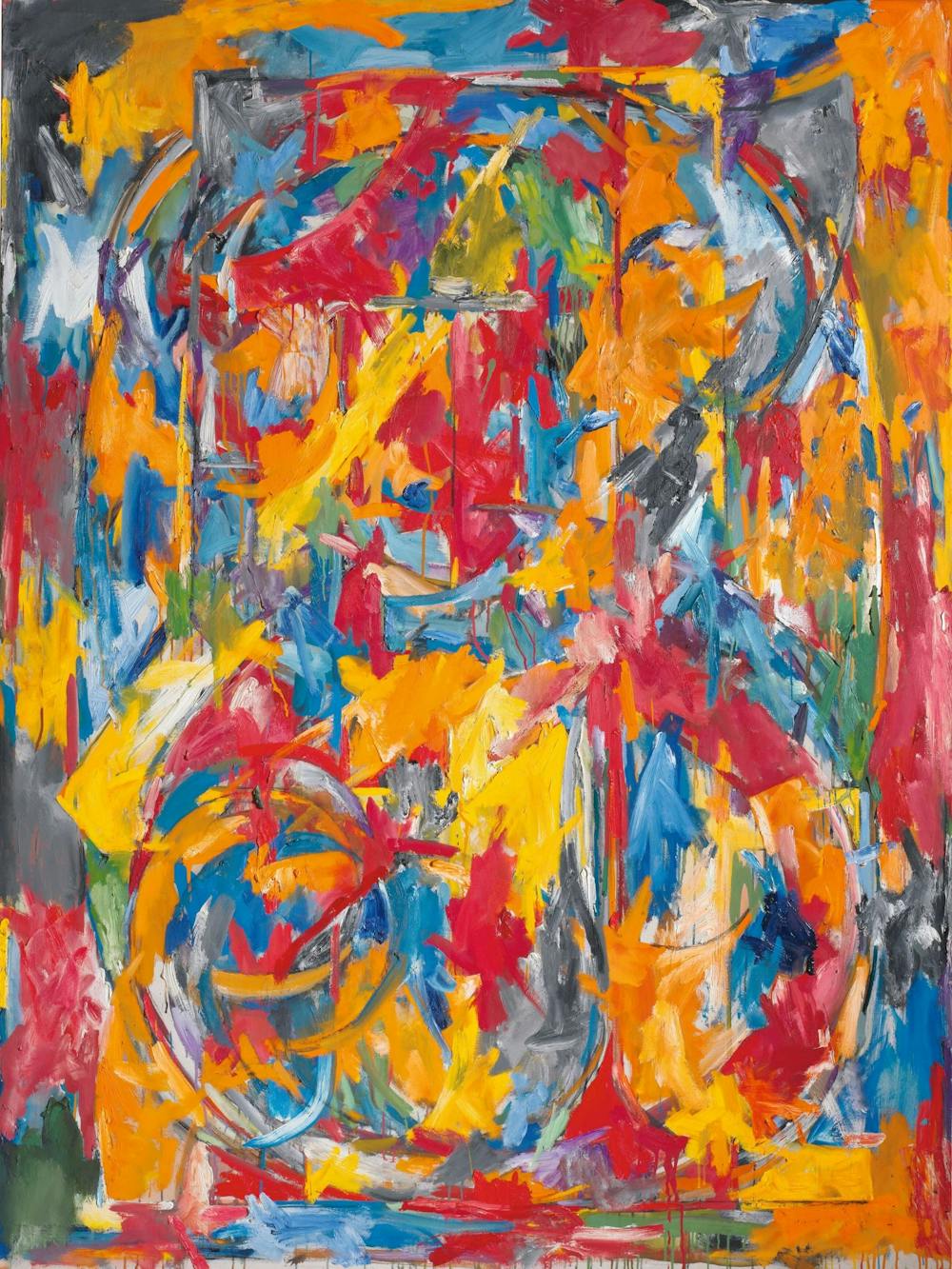
Jasper Johns
0 through 9, 1960
Oil on canvas, 72 1/2 x 54 in.
Private collection
Artwork © 2021 Jasper Johns/VAGA at Artists Rights Society (ARS), New York
Photo courtesy of the Philadelphia Museum of Art
However, sometimes the goals of being a cohesive exhibition and comprehensive retrospective are at odds. In one room, Untitled, 1972, a four–panel multimedia polyptych is shown alongside an array of its own retroactive sketches and prints. While this curatorial choice may align with the themes of duplication and “constant reinvention,” it distracts from what would otherwise be one of the exhibit’s most compelling works.
Far more successful is a historically accurate recreation of one of Jasper Johns’ 1960 shows at Leo Castelli’s New York City gallery. This configuration, which was arranged by Johns himself, gives each of the six paintings space to breathe. While they all share a common theme—the limits of visual perception—they still feel like they can stand on their own, distinct from one another.
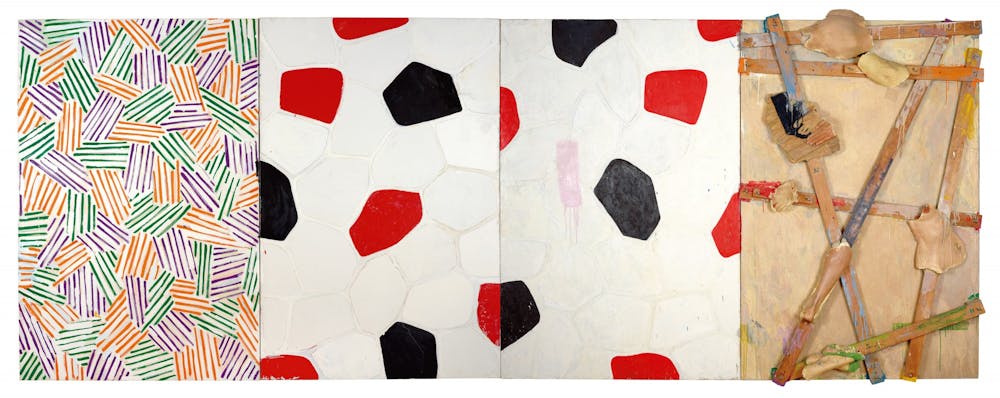
Jasper Johns
Untitled, 1972
Oil, encaustic, and collage on canvas with objects (four panels), 72 x 192 1/4 in.
Museum Ludwig, Cologne; donation Ludwig, 1976
Artwork © 2021 Jasper Johns/VAGA at Artists Rights Society (ARS), New York
Photo courtesy of the Philadelphia Museum of Art
Japan is another homage to a specific period in Johns’ career: two months in 1964 spent working in a studio in the Japanese Artists’ Hall in Tokyo’s Ginza district. The inspiration he drew from the Japanese art world manifested most directly in Johns’ signature crosshatch pattern. The motif crops up throughout his career, but it reaches an apex in the Usuyuki series, which translates to “light snow” in Japanese. One could argue that Japan dilutes Johns’ work by also showcasing that of his Japanese contemporaries. But Basualdo does the diligence of spotlighting non–white, non–American artists whose influence on Johns, who is both white and American, might have been sidelined otherwise.
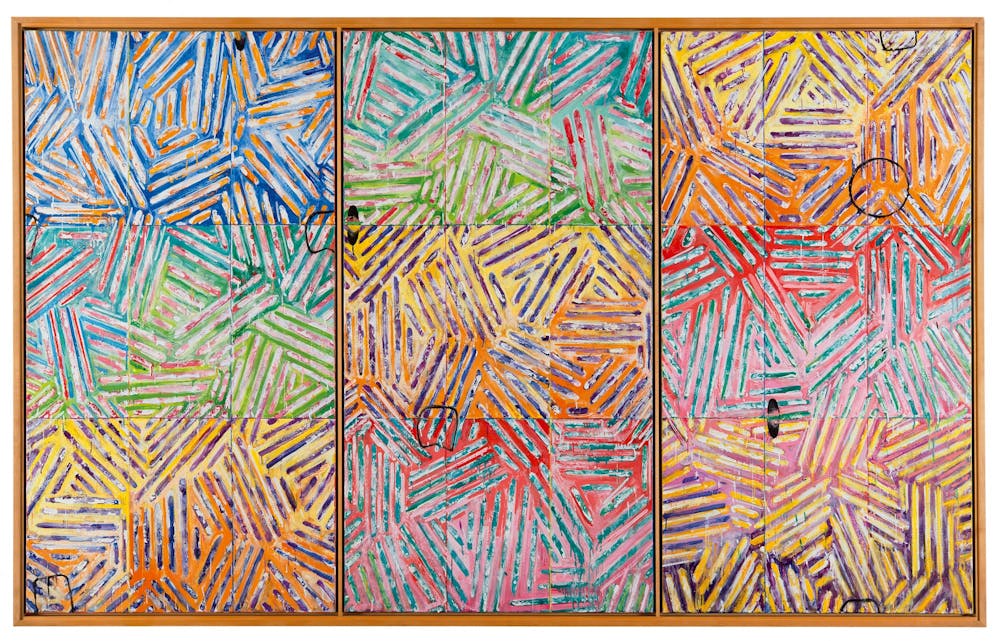
Jasper Johns
Usuyuki, 1982
Encaustic on canvas (three panels), 71 × 113 3/4 in.
Sezon Museum of Modern Art, Nagano, Japan
Artwork © 2021 Jasper Johns/VAGA at Artists Rights Society (ARS), New York
Photo courtesy of the Philadelphia Museum of Art
But history is not gospel when it comes to understanding Jasper Johns’ oeuvre. Returning to his seminal Flag, from 1954, it would be all too easy to assume the piece’s inspiration was a story told to a young Jasper by his father, that Johns was named for a flag–saving patriot. But that flag wasn’t actually an American flag, and Johns was honorably discharghed from the army in ’52. There’s undoubtedly a shifting relationship with nationalism and patriotism at play here, but it’s more likely that, in painting the stars and stripes, Johns was exercising the liberty that the flag itself represents.
Liberation from constraints has defined Jasper Johns’ work for the better part of a century, and there’s a part of me that left Mind/Mirror thinking that it may be time to liberate his work from such banal constraints as history, context, and even explanation, too.
